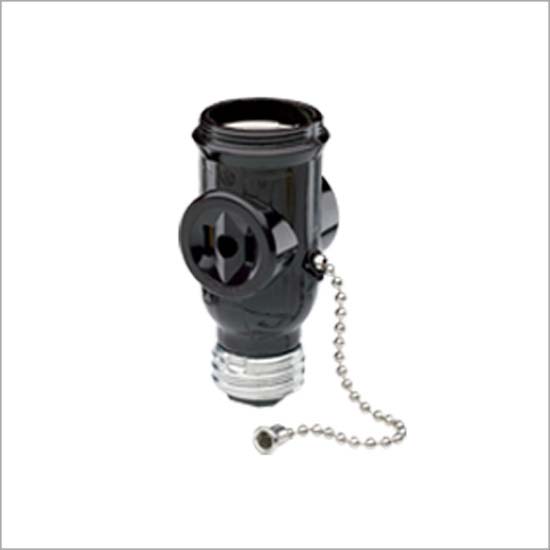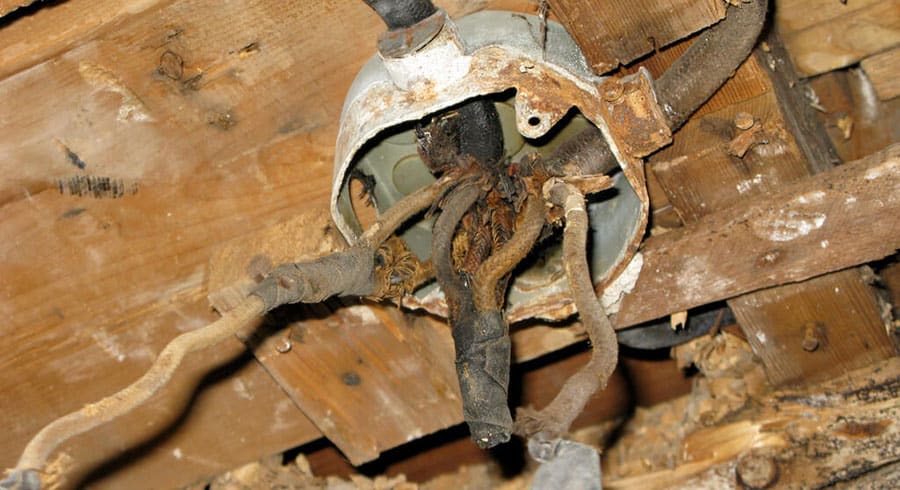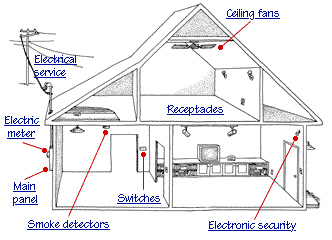How Long Does Electrical Wiring Last in a Home?
The electrical wiring is an essential part of any home. I often describe it to people as the house’s circulation system. Buying a newer home will be up to code and may not possess any serious hazards. However, an older home that was built a few decades ago may raise some concerns about its wiring. If you are going to be buying or are currently living in an older home, the condition of the wiring is something that will eventually need to be updated.
How long does electrical wiring last in a home? According to the International Association of Certified Home Inspectors (NACHI), the copper in electrical wiring can last over 100 years; however, the outer protective sheathing will breakdown much sooner. Depending on the type of sheathing often determines the lifespan, which is typically 50 to 70 years.
How Long Does Electrical Wiring Last?
The average life expectancy of home wiring is about 50 to 70 years. This period of time can be more in some cases. It can also be significantly less than that, depending on the way the wiring is installed, the presence of damage to the sheathing and the number of modifications during the years
Electrical wiring can last a really long time before starting to decompose or deteriorate if it is installed correctly.
On their own, the materials that a wire is comprised of can last a really long time. For example:
The copper inside the wires can last over 100 years.
The aluminum inside the wires can last between 80 and 100 years.
There’s much more that needs to be considered.
Electrical wiring is not always installed correctly.
Environmental factors the electrical wiring is installed in may not be ideal.
The electrical wiring may be faulty due to unpermitted remodeling, improper handyman or DIY work.
Advances in Electrical Safety Codes throughout the years.

Domestic uses and safety
Electricity in homes is an alternating current and is used to power electrical appliances. In a plug the wires are colour-coded and a fuse is included as a safety device in the circuit.
A plug connects a device to the mains electricity supply. The cable between the device and the three-pin plug contains three copper wires that are coated with plastic.
Copper wires are good conductors.
Plastic is a good insulator.
Earthing
Without the earth wire, if a fault occurs and the live wire becomes loose, there is a danger that it will touch the case. The next person who uses the appliance could get electrocuted.
The earth wire is therefore connected to the case and is attached to a metal plate or water pipe underground. As the wire is made of copper, the earth wire provides a low resistance path to the ground. In the event of a fault, the large live current passing through the case earth wire will follow this path to the ground instead of passing through a person, and will blow the fuse rendering the appliance safe.
Fuses
A fuse provides a built-in fail-safe to the electrical circuit for a device. The fuse contains a thin wire that will melt if the current gets too high. There may be a fault in the appliance that causes too much current flow. There may be a fault in the wiring that could cause the casing of the device to become live. In both cases a large current will flow through the low-resistance earth wire.

Electrical Safety: Safety & Health for Electrical Trades
How Do You Recognize Hazards?
The first step toward protecting yourself is recognizing the many hazards you face on the job. To do this, you must know which situations can place you in danger. Knowing where to look helps you to recognize hazards.
Inadequate wiring is dangerous.
Exposed electrical parts are dangerous.
Overhead powerlines are dangerous.
Wires with bad insulation can give you a shock.
Electrical systems and tools that are not grounded or double-insulated are dangerous.
Overloaded circuits are dangerous.
Damaged power tools and equipment are electrical hazards.
Using the wrong PPE is dangerous.
Using the wrong tool is dangerous.
Some on-site chemicals are harmful.
Defective ladders and scaffolding are dangerous.
Ladders that conduct electricity are dangerous.
Electrical hazards can be made worse if the worker, location, or equipment is wet.
Inadequate wiring hazards
An electrical hazard exists when the wire is too small a gauge for the current it will carry. Normally, the circuit breaker in a circuit is matched to the wire size.
fixtures could be wired with a smaller gauge than the supply cable. Let’s say a light fixture is replaced with another device that uses more current. The current capacity (ampacity) of the branch wire could be exceeded. When a wire is too small for the cur-rent it is supposed to carry, the wire will heat up. The heated wire could cause a fire.
When you use an extension cord, the size of the wire you are placing into the circuit may be too small for the equipment. The circuit breaker could be the right size for the circuit but not right for the smaller-gauge extension cord. A tool plugged into the extension cord may use more current than the cord can handle without tripping the circuit breaker. The wire will overheat and could cause a fire.

How a Home Electrical System Works
An overview of how a home electrical system works with illustrations of various components
Electricity has become an essential part of contemporary life, energizing lights, appliances, heat, air conditioning, televisions, telephones, computers, and many other modern conveniences.
Electricity arrives at your house from your local utility company by a power line or underground though a conduit. Most homes have three-wire service—two hot wires and one neutral.
Throughout the house, one hot wire and one neutral wire power conventional 120-volt lights and appliances. Both hot wires and the neutral wire make a 240-volt circuit for large appliances such as air conditioners and electric furnaces.
An electric meter, monitored by your electric utility company, is mounted where the electricity enters your house. The main panel is usually right next to or under the meter. This is the central distribution point for the electrical circuits that run to lights, receptacles, and appliances throughout the house.
A circuit, by definition, is a circular journey that begins and ends at the same place, and this is essentially how electricity works. Current begins at a power source, powers the appliance or device along the circuit, and then returns to the power source. Any interruption in this path will render the circuit dead.
Common Electrical Hazards and Preventable Steps
The major hazards associated with electricity are electrical shock and fire. Electrical shock occurs when the body becomes part of the electric circuit, either when an individual comes in contact with both wires of an electrical circuit, one wire of an energized circuit and the ground, or a metallic part that has become energized by contact with an electrical conductor.
The severity and effects of an electrical shock depend on a number of factors, such as the pathway through the body, the amount of current, the length of time of the exposure, and whether the skin is wet or dry. Water is a great conductor of electricity, allowing current to flow more easily in wet conditions and through wet skin. The effect of the shock may range from a slight tingle to severe burns to cardiac arrest.
In addition to the electrical shock hazards, sparks from electrical equipment can serve as an ignition source for flammableor explosivevapors or combustible materials. Loss of electrical power can create hazardous situations. Flammable or toxic vapors may be released as a chemical warms when a refrigerator or freezer fails. Fume hoods may cease to operate, allowing vapors to be released into the laboratory. If magnetic or mechanical stirrers fail to operate, safe mixing of reagents may be compromised.
Electric shock
Electric shock is another hazard common to many pieces of laboratory equipment. Any electrically powered item of laboratory equipment which is subject to spillage of chemicals or water, or exhibit signs of excessive wear should be used carefully. Electrical shocks occur when the electrical circuit completed by the part of human body. One way this can occur is by contacting a metallic part of a piece of equipment that has become energized by contact with an electrical conductor.
The severity of the electrical shock depends on the following:
The amount of the current (given as a list above)
The pathway through the body
The duration of the exposure
Whether the skin is wet or dry